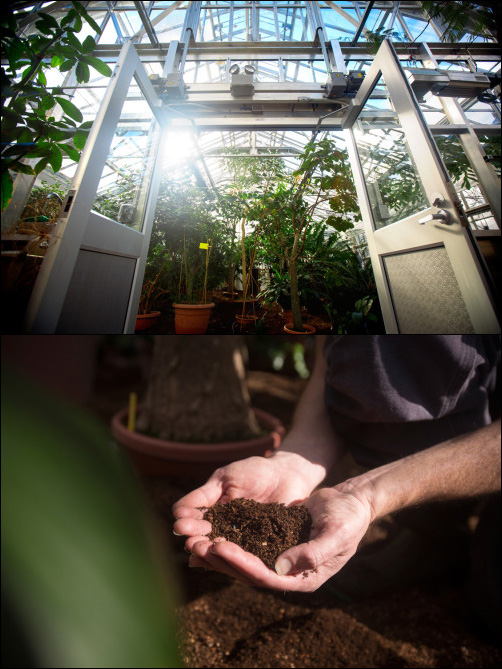 Step into the Palm House in the rebuilt Liberty Hyde Bailey Conservatory, and you might imagine you’ve walked into a dense tropical forest.
Step into the Palm House in the rebuilt Liberty Hyde Bailey Conservatory, and you might imagine you’ve walked into a dense tropical forest.
The Palm House section fronting Tower Road features a single, large bed bounded by a walkway. The meandering path surrounding the central bed planted with trees, ferns, legumes, flowering bromeliads and other plants is meant to simulate a tropical forest trail.
Named in honor of Liberty Hyde Bailey’s specialty, the Palm House holds bird-of-paradise, a titan arum, a number of cycads and species of ethnobotanical interest like cocoa and coffee plants in a bed filled with a growing medium made of a custom mix of coconut coir, biochar and clay-based products.
The other section, known as the Student House and located closest to the Plant Science Building, features potted plants arranged on benches. Plants in this section – orchids, cacti, euphorbs, grasses and an array of primitive and unusual plants – are used mainly for teaching and some research.
Learn more about the Liberty Hyde Bailey Conservatory Greenhouse at the Cornell Chronicle.
Photos by Lindsay France


